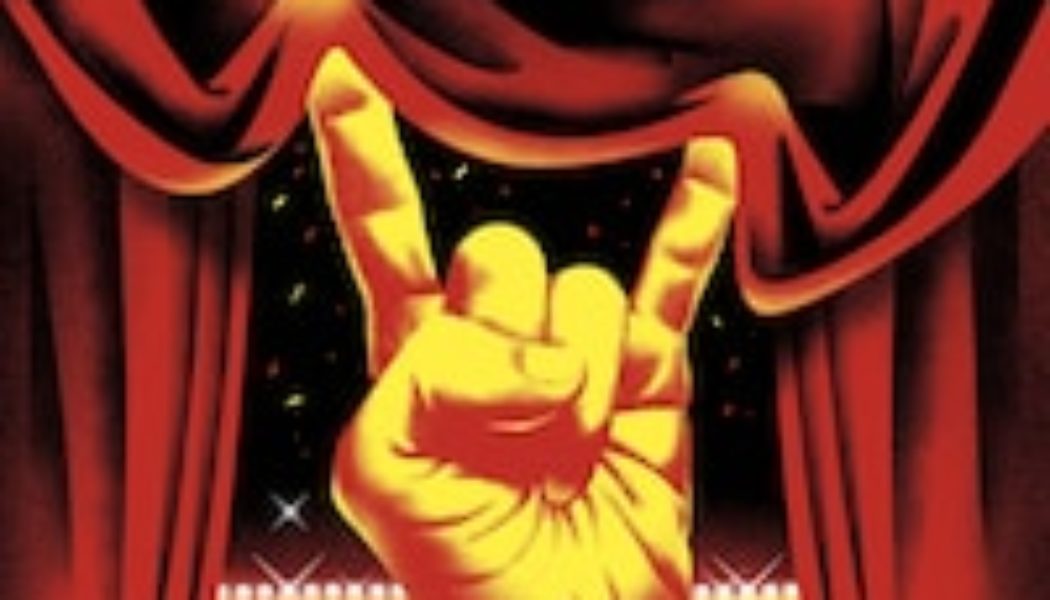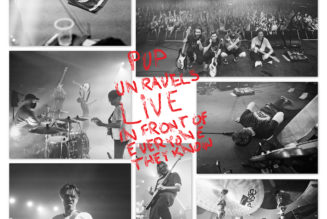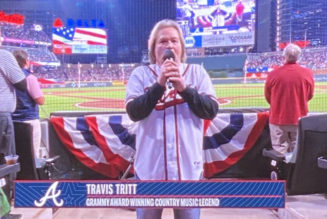
NEW YORK — There are quite a few musical lives told on Broadway these days. David Adjmi’s critically acclaimed play with music “Stereophonic” dissects the clashes that stir up a band’s recording process in 1970s California. “Hell’s Kitchen” introduces us to a teenage girl’s discovery of her musical talent. “The Heart of Rock and Roll” lightheartedly tells the story of a small-time rock quartet’s ex-singer torn between his day job and a potentially lucrative return to the stage — to the tune of hits by Huey Lewis and the News.
Off-Broadway has joined the fray, too: The musical “The Lonely Few,” which premiered in Los Angeles last year and just ended a run at MCC Theater, is about the romance between two rock musicians, one of them the singer of the rising title band and the other a more established star.
Well, you might ask, what’s so special about this crop of shows? After all, bio-jukeboxes have long brought the lives of music stars to theater stages. Right now, you can see re-creations of Michael Jackson’s moves and trills in “MJ” and the self-explanatory “A Beautiful Noise: The Neil Diamond Musical” on Broadway or on tour. Shows about chart-topping performers are common, including most recently the Temptations, Tina Turner, Cher and Donna Summer. Some stars have even handled the mythologizing themselves, such as Bruce Springsteen and Melissa Etheridge, both of whom performed musicalized memoirs.
But something different has been going on with those other productions because they offer varied narratives about fictional musicians. Granted, “Hell’s Kitchen” is inspired by Alicia Keys’s life and it uses her songs, but the show takes such liberties with reality that it feels more autofictional than autobiographical, and that’s a big part of what makes it work.
That all those shows opened within a few months of one another is obviously due to the vagaries of scheduling, but there’s also the sense that the theater has so fully reconciled with pop, rock, R&B and country — you know, the music that’s been filling the Billboard charts since the mid-1950s — that it’s finally comfortable enough to take liberties with them.
And artistically speaking, that’s a lot more liberating than what the majority of bio-musicals enjoy, since those have to stick to an approved, usually sanitized version of someone’s life, work in the obligatory hits and abide by estates.
Popular music is a privileged place from which to explore creative struggles — who doesn’t love a backstage story? — and complicated, often destructive personalities. Fictional characters obviously don’t have a built-in audience like, say, Cher or Tina Turner, but they free writers and actors from the shackles of mimicry. “Stereophonic” is unfettered because it’s not specifically about the making of Fleetwood Mac’s “Rumours” and nobody’s specifically imitating Stevie Nicks or Lindsey Buckingham.
Watching theater-makers use their imagination to conjure up the life and art of music-makers is especially satisfying because it has been a bit of a slog getting to this point.
The popular sounds that utterly dominated the second half of the 20th century originated in the United States, so you’d think the lives of the people who created them would have long been a source of inspiration for the American theater. But for decades, Broadway maintained a semi-adversarial relationship with pop, rock and R&B, which it saw as a superficial, commercially minded Other. In a way, the feud between the purist lyricist Charley and the more opportunistic composer Frank in Stephen Sondheim and George Furth’s “Merrily We Roll Along” (whose Broadway revival closes July 7) reflects the divide between musical theater and popular music.
When rock and R&B emerged in the mid-1950s, Broadway was long established as an institution with a solid foothold on the charts. It snubbed the newcomer, assuming rock, in particular, would go away like a pesky rash. What little attention was paid was derisive. The wariness went both ways for a long time, with rockers and their fans considering, at least outwardly, musical theater as the province of convention-bound dorks.
The most famous example of a rock character on Broadway around that time was in the hit musical “Bye Bye Birdie” (1960), where an obvious stand-in for Elvis Presley is depicted as an arrogant, hip-swiveling dolt. At one point in the show, a middle-aged couple comically lament the new generation’s shortcomings: “Laughing, singing, dancing, grinning morons!” they sing. “Kids! With their awful clothes and their rock and roll!/ Why can’t they dance like we did?” (A funny book and a catchy score make “Bye Bye Birdie” a regularly revived hoot — the Kennedy Center is presenting it through this weekend.)
Things improved slowly over the following decades as theater warmed up to stories about musicians. Sam Shepard is probably the leading playwright of note who was involved in both the stage and music branches of the counterculture: Early in his career, he was active in the off-off-Broadway company Theatre Genesis and played in the progressive folk band the Holy Modal Rounders. Rock musicians were key characters in his early 1970s plays “Cowboy Mouth” and “The Tooth of Crime.” That we still haven’t seen a major work about the New York punk scene just feels incomprehensible.
Blues, jazz and funk musicians fared marginally better thanks to such nuanced works as August Wilson’s fictionalized take on the title singer in “Ma Rainey’s Black Bottom” (1982), which, like “Stereophonic,” is set in a recording studio, and “Side Man” (1998), Warren Leight’s memory play about a jazz trumpeter. Still, that’s not much output.
As time went on and theater filled with more people who grew up with rock, the dramatization of that world slowly started to pick up. An important step in the progressive détente was John Cameron Mitchell and Stephen Trask’s “Hedwig and the Angry Inch” (1998), which was about the flamboyant singer of a fictional East German band and was developed as much in clubs as on theater stages.
But it’s in the past 15 years or so that things have really heated up, with fictional musicians filling shows as different as “Rock of Ages” (2005) and “Once” (2011). Kids (“School of Rock”) and teenagers (“Sing Street”) were roped into made-up stage groups. Intimate works attempted to capture smaller scenes, with such mid-2010s works as Laura Eason’s play “The Undeniable Sound of Right Now,” which was set in a grunge-era Chicago club, and Stew’s “The Total Bent,” about a gospel singer’s son coming out as both gay and a secular music god. Even the worldwide juggernaut known as K-pop made it to Broadway, albeit briefly, with “KPOP,” about the making of a fictional group. (The subject of musicians who didn’t train in musical theater and now turn to it could be its own article, with the latest being the indie singer-songwriter Ingrid Michaelson, who wrote the score to “The Notebook.”)
Of course, theater often struggles to capture a specific type of Dionysian energy — “Almost Famous,” the 2019 stage adaptation of the film, cheesily Broadway-fied sex, drugs and rock and roll. Purists also argue that when it comes to musicals, making a character a musician is a bit of a cop-out, an easy way to squeeze in numbers since the songs tend to be diegetic: Characters rehearse, perform or record, or they hear a tune on the radio — ta-da, there’s your musical moment. The lyrics also don’t necessarily move the action or provide psychological insights. Since those elements are seen as integral to musical theater, such works are easy to dismiss as artistically inferior — something that plagues biographical shows and fictional ones alike.
Personally, I don’t find it disqualifying when songs are not perfectly integrated into a musical, and I want more shows about the agony and the ecstasy of creating music. It’s thrilling to see shows as diverse as the ones currently on our stages investigate such a huge part of American culture. When a playwright comes up with a great show about a techno DJ, we’ll really have made it.









